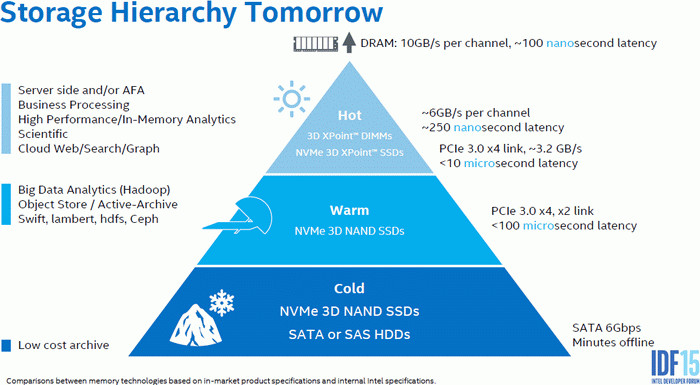Early on in Intel's 3D XPoint teasers and announcements, the company planned to have this memory integrated not only as a system cache solution or SSD replacement, but also as a potential substitute for DRAM memory. The objective: to revolutionize the amount of DRAM memory a given system can carry, at a much lower price per GB, with a somewhat acceptable performance penalty. Intel describes the current DRAM implementation as too small, too expensive, and too unstable (read: data loss on power loss) to continue being on top of the memory food chain. This is where the 3D Xpoint DIMM implementation can bear fruits, by offering significantly higher amounts of storage at much lower pricing, while keeping attractive bandwidth and latency performance. DRAM will still be used for system-critical operations and booting, albeit in lower capacities, and will be used side by side with these 3D XPoint DIMM slots, which will take in the bulk of the work.

This kind of usage for Intel's 3D XPoint also delivers an interesting side-effect: since this memory is persistent (which means that data isn't lost when the power is turned off,) interruption or loss of power won't erase the work in memory. At the same time, this means that this kind of DRAM-substitute memory requires some security precautions DRAM doesn't, since anyone with direct physical access to the stick could just remove one and take it with all the data inside. Even though a 2018 time to market seems a little to optimistic, considering all the changes this implementation would require from adopters, the technology is definitely promising enough to tempt users to make the jump. |